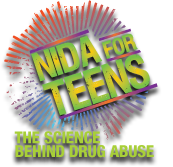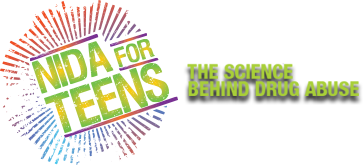Prescription Stimulants
 As their name suggests, prescription stimulants increase—or "stimulate"—activities and processes in the body. This increased activity can boost alertness, attention, and energy. It also can raise a person's blood pressure and heart rate. In the past, stimulants were used to treat a variety of conditions, including asthma and other respiratory problems, obesity, and neurological disorders. As their potential for abuse and addiction became apparent, doctors began to prescribe them less often. Now, stimulants are prescribed for treating only a few health conditions, including attention deficit hyperactivity disorder (ADHD), narcolepsy (a sleep disorder), and, in some instances, depression that has not responded to other treatments.
As their name suggests, prescription stimulants increase—or "stimulate"—activities and processes in the body. This increased activity can boost alertness, attention, and energy. It also can raise a person's blood pressure and heart rate. In the past, stimulants were used to treat a variety of conditions, including asthma and other respiratory problems, obesity, and neurological disorders. As their potential for abuse and addiction became apparent, doctors began to prescribe them less often. Now, stimulants are prescribed for treating only a few health conditions, including attention deficit hyperactivity disorder (ADHD), narcolepsy (a sleep disorder), and, in some instances, depression that has not responded to other treatments.
| Type | Conditions They Treat | Street Names |
|---|---|---|
|
|
Skippy, the smart drug, vitamin r, bennies, black beauties, roses, hearts, speed, uppers |
Facts on Stimulants [PDF - 528 KB]
Facts on Prescription and Over-the-Counter Drugs [PDF - 428 KB]
Prescription stimulants are normally taken in pill form, but some people who abuse them crush the tablets and snort or inject them, which can cause complications because insoluble fillers in the tablets can block small blood vessels. Stimulants have been abused for both "performance enhancement" (e.g., to stay up all night cramming for an exam) and to get high.
The brain is made up of nerve cells that send messages to each other by releasing chemicals called neurotransmitters. Common stimulants, such as amphetamines (e.g., Adderall) and methylphenidate (e.g., Ritalin), have chemical structures that are similar to certain key brain neurotransmitters called monoamines, including dopamine and norepinephrine. Stimulants enhance the effects of these chemicals in the brain and body.
When doctors prescribe stimulants, they start with low doses and increase them gradually until they fully treat the condition for which they are prescribed. However, when taken in doses and by routes other than those prescribed (e.g., snorting or injecting), stimulants can increase the dopamine in the brain very quickly, disrupting normal communication between brain cells, producing euphoria, and increasing the risk of addiction. Addiction is when a person compulsively seeks out the drug and abuses it despite knowing about the harmful consequences.
Stimulant abuse can be extremely dangerous. Taking high doses of a stimulant can cause an irregular heartbeat, dangerously high body temperatures, and the potential for heart failure or seizures. For some people, taking high doses of certain stimulants, or repeatedly abusing them, can lead to feelings of hostility or paranoia.
Stimulants should not be mixed with antidepressants (they may enhance the effects of a stimulant) or over-the-counter cold medicines that contain decongestants. This mixture can lead to dangerously high blood pressure or irregular heart rhythms.
People show varying degrees of withdrawal symptoms after chronic stimulant abuse. Those who do have symptoms may report:
- An inability to experience pleasure (anhedonia)
- Suicidal thinking
- Anxiety and irritability
- Fatigue, lack of energy, and changes in sleep patterns
- Intense drug cravings
Supportive therapies and treatment of mood symptoms may help lessen these effects.
Treatment for stimulant addiction is based on behavioral therapies proven effective for treating cocaine or methamphetamine addiction. These include contingency management, a form of therapy that allows patients to earn rewards for healthy behaviors like attending treatment and staying off drugs; and cognitive behavioral therapy, which teaches patients to recognize risky situations, avoid drug use, and cope more effectively with problems. Recovery support groups may also be effective when combined with a behavioral therapy.
When someone you care about has a drug problem, it's not always easy to know what to do. If someone you know is abusing or misusing prescription drugs, encourage him or her to talk to a parent, school guidance counselor, or other trusted adult. There are also anonymous resources, such as the National Suicide Prevention Lifeline (1-800-273-TALK) and the Treatment Referral Helpline (1-800-662-HELP).
The National Suicide Prevention Lifeline (1-800-273-TALK) is a crisis hotline that can help with a lot of issues, not just suicide. For example, anyone who feels sad, hopeless, or suicidal; family and friends who are concerned about a loved one; or anyone interested in mental health treatment referrals can call this Lifeline. Callers are connected with a nearby professional who will talk with them about what they're feeling or about concerns for family and friends.
In addition, the Treatment Referral Helpline (1-800-662-HELP)—offered by the Substance Abuse and Mental Health Services Administration—refers callers to treatment facilities, support groups, and other local organizations that can provide help for their specific needs. You can also locate treatment centers in your state by going to www.samhsa.gov/treatment.




